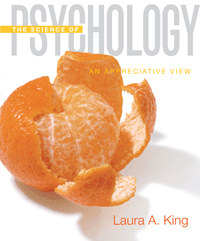1 A) Perception, sensation B) Sensation, perception C) Audiology, ophthalmology D) Ophthalmology, audiology 2 A) one sense inducing an experience in another sense. B) the process by which visual stimuli is transmitted to the visual cortex. C) seeing the color green after staring at the color red. D) the frequency and pitch of sound waves. 3 A) 25 B) 50 C) 75 D) 100 4 A) the difference threshold. B) the absolute threshold. C) subliminal perception. D) signal detection theory. 5 A) Weber's law. B) the signal detection theory. C) sensory adaptation. D) the Stroop effect. 6 A) strong smells becoming almost unnoticeable. B) the relationship between color perception and specific cone cells. C) two stimuli differing by the same percentage in order to be perceived as different. D) None of the answers are correct. 7 A) between 100 and 400 nm. B) between 400 and 700 nm. C) between 700 and 1000 nm. D) between 100 and 1000 nm. 8 A) iris B) cornea C) sclera D) retina 9 A) pupil, iris B) iris, pupil C) cornea, lens D) lens, cornea 10 A) cornea. B) lens. C) retina. D) sclera. 11 A) refers to the retina's blind spot. B) transmits visual information from the left side of the retina to the right lobe of the occipital cortex and vice versa. C) allows light to be bent such that the occipital cortex can perceive information both close and far away. D) is responsible for afterimages. 12 what pathway is located in the _____ lobe, whereas the where pathway is located in the _____ lobe.A) temporal, frontal B) temporal, parietal C) frontal, parietal D) occipital, temporal 13 A) trichromatic theory B) binding theory C) opponent-process theory D) parallel-processing theory 14 A) binocular cues. B) monocular cues. C) texture of objects. D) All of the answers are correct. 15 A) timbre, pitch B) pitch, timber C) pitch, loudness D) loudness, pitch 16 A) Sound waves reach the pinna first, then the eardrum, then the oval window. B) Sound waves reach the cochlea first, then the eardrum, then the hammer. C) Sound waves reach the hammer first, then the cochlea, then the pinna. D) Sound waves reach the pinna first, then the cochlea, then the ear drum. 17 A) hair cells within the basilar membrane. B) timing and intensity. C) the number of times a neuron fires. D) All of the answers are correct. 18 A) sweetness. B) sourness. C) saltiness. D) bitterness. 19 A) the stimuli B) individual physiological differences C) culture D) All of the answers are correct. 20 A) the limbic system. B) the occipital lobe. C) the parietal lobe. D) the reticular formation. 21 A) level of selective attention B) level of subliminal perception C) difference threshold D) absolute threshold





